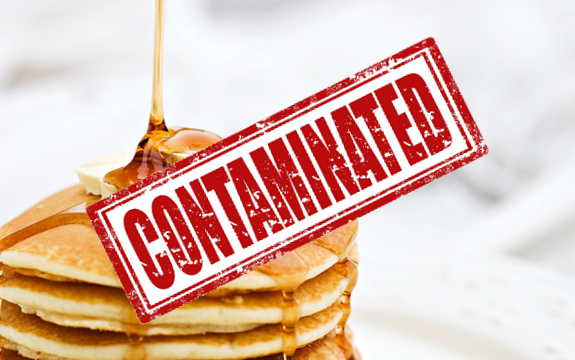Study: “Safe” Levels of Food Contaminants Contribute to Chronic Disease Risk

 We are exposed to countless pollutants on a daily basis in our food, air, water, clothing, and homes. And while many of them are known to be toxic, the consequences of low-level exposure are largely unknown. Despite the FDA and EPA claiming safety for the small amounts of contaminants we’re exposed to, a recent study indicates that long-term, low-level exposure to food contaminants could result in an increased risk of chronic diseases associated with metabolic function like diabetes.
We are exposed to countless pollutants on a daily basis in our food, air, water, clothing, and homes. And while many of them are known to be toxic, the consequences of low-level exposure are largely unknown. Despite the FDA and EPA claiming safety for the small amounts of contaminants we’re exposed to, a recent study indicates that long-term, low-level exposure to food contaminants could result in an increased risk of chronic diseases associated with metabolic function like diabetes.
If you eat right and exercise but are still unable to improve your health, these low-level toxins could be to blame.
Researchers studied two groups of obese mice—both receiving a diet of high-fat and high-sugar content. One group also received a “cocktail” of pollutants at a low dosage from pre-conception to adulthood. Those mice experienced unforeseen health effects.
Read: Study Finds Even ‘Safe’ Levels of Sugar Aren’t Safe
Though they didn’t experience weight gain or toxicity, the female mice fed the pollutants did become glucose intolerant, suggesting possible effects on insulin signaling. In the males, results were different, with no change in glucose tolerance but negative changes in liver functioning related to cholesterol synthesis.
“This report that confirms something we’ve known for a long time: pollution is bad for us,” said Gerald Weissmann, M.D., of The FASEB Journal. “But, what’s equally important, it shows that evaluating food contaminants and pollutants on an individual basis may be too simplistic. We can see that when “safe” levels of contaminants and pollutants act together, they have significant impact on public health.”
The results suggest these low-level pollutants, present all around us, could be contributing to chronic diseases.
“This study adds evidences for rethinking the way of addressing risk assessment especially when considering that the human population is widely exposed to low levels of thousands of chemicals, and that the health impact of realistic mixtures of pollutants will have to be tested as well,” said Brigitte Le Magueresse-Battistoni, from the French National Institute of Health and Medical Research (INSERM). “Indeed, one pollutant could have a different effect when in mixture with other pollutants.
Thus, our study may have strong implications in terms of recommendations for food security. Our data also bring new light to the understanding of the impact of environmental food contaminants in the development of metabolic diseases.”
Unfortunately, the FDA is failing to keep our food safe. As conscientious consumers who know the government won’t step up to further regulate toxic exposure and corporations behind the pollutants in our water and food supply won’t likely be proactive, we have a duty to keep ourselves healthy in spite of the pollutants around us. This can be done by minimizing exposure through the consumption of natural organic foods and by detoxing our bodies on a regular basis through natural means.
Additional Sources:
